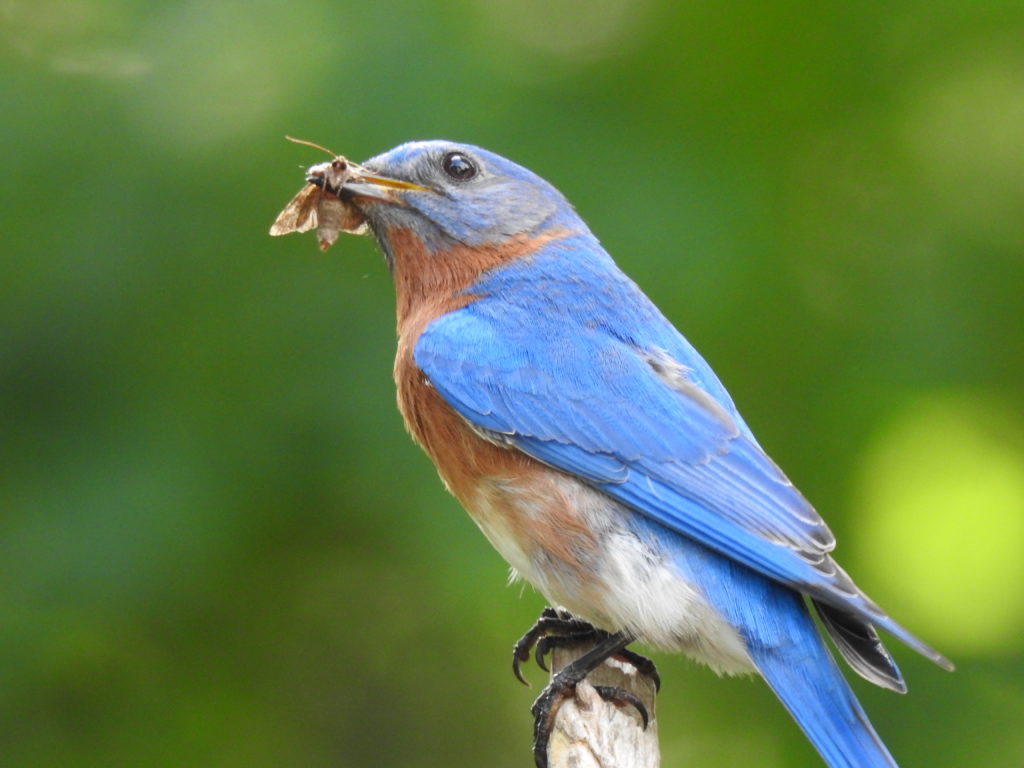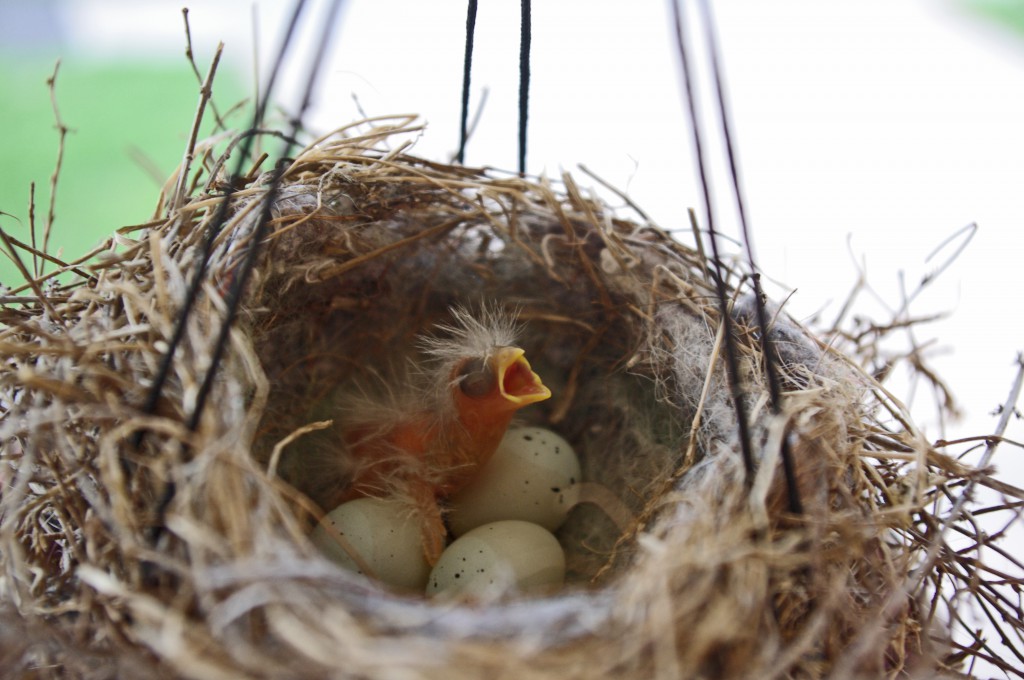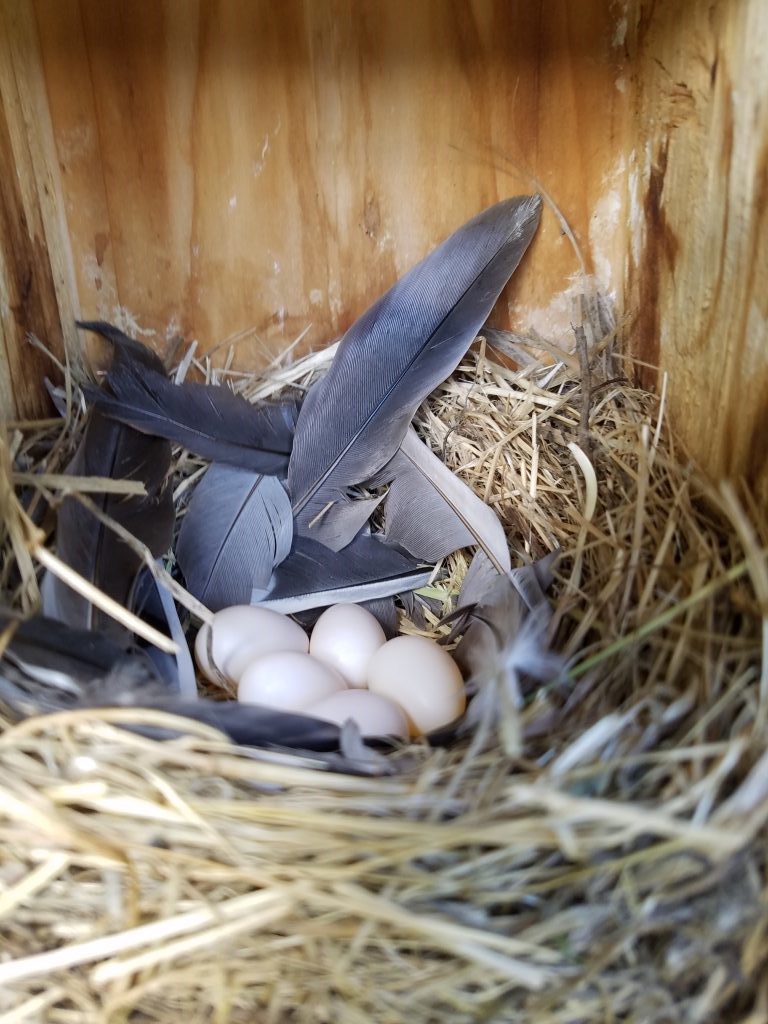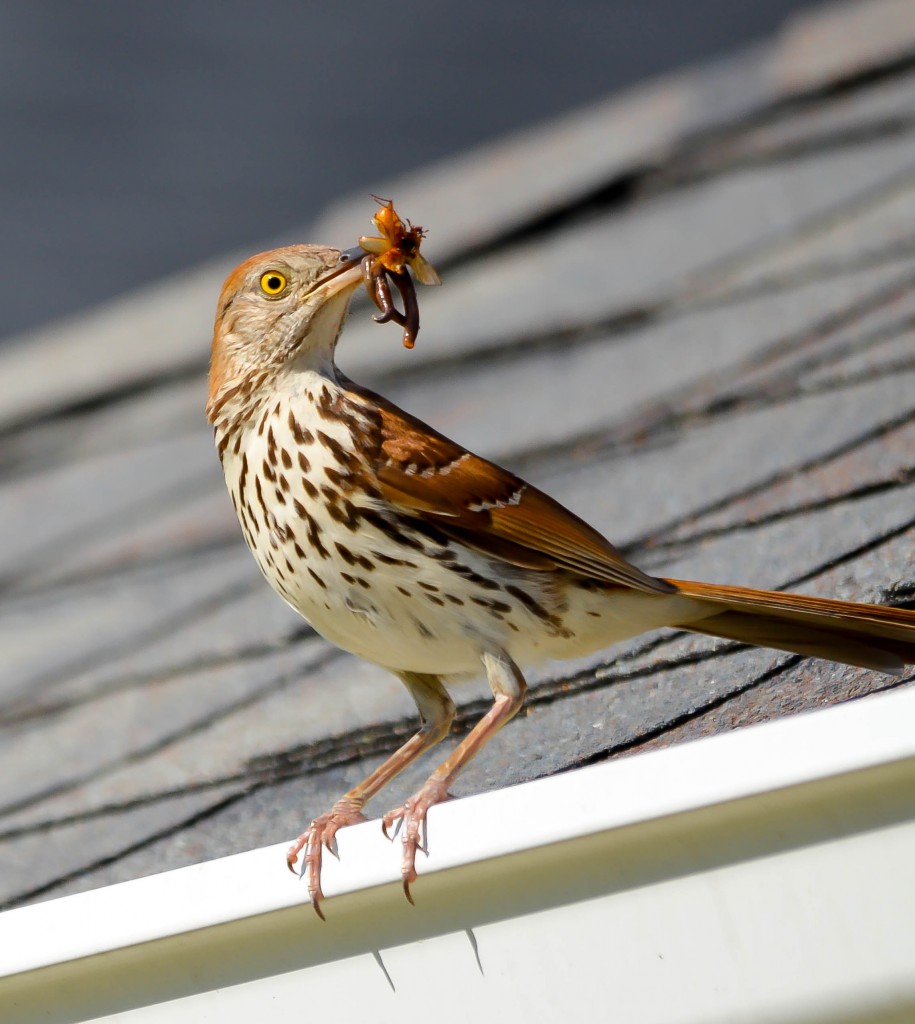Research
2023. Bailey, R. L., L. Larson, and D. N. Bonter. NestWatch: An open-access, long-term data set on avian reproductive success. Ecology: e4230. https://doi.org/10.1002/ecy.4230
2023. Hensley, F. R., and C. I. Hensley. Patterns of habitat use and behaviors by gray ratsnakes (Pantherophis obsoletus alleghaniensis) occupying an abandoned building. Herpetological Conservation and Biology 18(3): 579–592. Available here.
2023. Taff, C. C., and J. R. Shipley. Inconsistent shifts in warming and temperature variability are linked to reduced avian fitness. Nature Communications 14: 7400. https://doi.org/10.1038/s41467-023-43071-y
2023. Lauck, K.S., A. Ke, E.M. Olimpi, D. Paredes, K. Hood, T. Phillips, W.R.L. Anderegg, and D.S. Karp. Agriculture and hot temperatures interactively erode the nest success of habitat generalist birds across the United States. Science 382(6668): 290–294. 10.1126/science.add2915
2023. Abernathy, V.E., A. Good, A. Blanchard, M. Bongiovanni, E. Bonds, H. Warner, E. Chaknis, G. Pulsifer, and F. Huntley. The effects of climate change on the nesting phenology of three shorebird species in the United States. Animals 2023(13): 2459. https://doi.org/10.3390/ani13152459
2023. Burgess, M.L. The role of natural and artificial photoperiod on songbird physiology and development. Ph.D. Dissertation, North Carolina State University, Raleigh, NC. https://repository.lib.ncsu.edu/bitstream/handle/1840.20/41278/etd.pdf?sequence=1
2023. Gruber, C. The relationship between temperature, rainfall, and tree swallow fledging times. M.S. thesis, Univ. of Tennessee at Chattanooga, Chattanooga, TN. https://scholar.utc.edu/theses/802/
2022. Harrod, S.E., and V. Rolland. Using citizen science to determine if songbird nesting parameters fluctuate in synchrony. PLoS ONE 17(11): e0277656. https://doi.org/10.1371/journal. pone.0277656
2022. Callery, K., S.E. Schulwitz, A.R. Hunt, J.M. Winiarski, C.J.W. McClure, R.A. Fischer, and J.A. Heath. Phenology effects on productivity and hatching-asynchrony of American kestrels (Falco sparverius) across a continent. Global Ecology and Conservation 36: e02124. https://doi.org/10.1016/j.gecco.2022.e02124
2022. Shipley, J.R., C.W. Twining, M. Mathieu-Resuge, T.P. Parmar, M. Kainz, D. Martin-Creuzburg, C. Weber, D.W. Winkler, C.H. Graham, and B. Matthews. Climate change shifts the timing of nutritional flux from aquatic insects. Current Biology 32(6):1342-1349.e3. https://doi.org/10.1016/j.cub.2022.01.057

Eastern Bluebird
2021. Bailey, R.L. and D.N. Bonter. Large-scale supplemental feeding alters lay date and nest survival in Eastern Bluebirds but not in two species of chickadees. Ornithological Applications 124: 1-11. duab046. https://doi.org/10.1093/ornithapp/duab046
2020. Senzaki, M., J.R. Barber, J.N. Phillips, N.H. Carter, C.B. Cooper, M.A. Ditmer, K.M. Fristrup, C.J.W. McClure, D.J. Mennitt, L.P. Tyrrell, J. Vukomanovic, A.A. Wilson, and C.D. Francis. Sensory pollutants alter bird phenology and fitness across a continent. Nature 2020(587): 605–609. https://doi.org/10.1038/s41586-020-2903-7
2020. Bailey, R.L., H.A. Faulkner-Grant, V.Y. Martin, T.B. Phillips, and D.N. Bonter. Nest usurpation by non-native birds and the role of people in nest box management. Conservation Science and Practice 2020: e185. https://doi.org/10.1111/csp2.185
2020. Nord, A. and C.B. Cooper. Night conditions affect morning incubation behaviour differently across a latitudinal gradient. Ibis 162: 827-835. https://doi.org/10.1111/ibi.12804″>10.1111/ibi.12804
2019. Carleton, R.E., J.H. Graham, A. Lee, Z.P. Taylor, and J.F. Carleton. Reproductive success of Eastern Bluebirds (Sialia sialis) varies with the timing and severity of drought. PLoS ONE 14(8): e0214266. https://doi.org/10.1371/journal.pone.0214266
2018. Sockman, J., and J. Courter. The impacts of temperature, precipitation, and
growing degree-days on first egg dates of Eastern Bluebird (Sialia sialis) and Tree Swallow (Tachycineta bicolor) in Ohio. American Midland Naturalist 180(2): 207-215. https://doi.org/10.1674/0003-0031-180.2.207.
2018. Watts, H.E., D. Jiminez, V. Pacheko, and T.P. Vilgalys. Temperature‐correlated shifts in the timing of egg‐laying in House Finches Haemorhous mexicanus. https://doi.org/10.1111/ibi.12676

House Finch Nest
2017. Socolar, J.B., P.N. Epanchin, S.R. Beissinger, and M.W. Tingley. Phenological shifts conserve thermal niches in North American birds and reshape expectations for climate-driven range shifts. Proceedings of the National Academy of Sciences: https://doi.org/10.1073/pnas.1705897114
2017. Bailey, R.L., and D.N. Bonter. Predator guards on nest boxes improve nesting success of birds. Wildlife Society Bulletin 41(3):434–441. https://doi.org/10.1002/wsb.801
2017. Bailey, R.L. and M. Sherwood. Nest box use by the Dark-eyed Junco (Junco hyemalis). Wilson Journal of Ornithology 129(3):620-625. https://doi.org/10.1676/16-118.1
2016. Curry, C.M., and M.A. Patten. Shadow of a doubt: premating and postmating isolating barriers in a temporally complex songbird (Passeriformes: Paridae) hybrid zone. Behavioral Ecology and Sociobiology 70(8):1171-1186. https://doi.org/10.1007/s00265-016-2126-y
2014. Bailey, R.L., and G.E. Clark. Occurrence of twin embryos in the eastern bluebird. PeerJ 2:e273. https://doi.org/10.7717/peerj.273
2010. Hyman, R.B. Late fledging of Red-bellied Woodpecker in New York State. Kingbird 60:311-312.
2009. Cooper, C.B., M.A. Voss, and B. Zivkovic. Extended laying interval of ultimate eggs of the Eastern Bluebird. Condor 111:752-755. https://doi.org/10.1525/cond.2009.090061
2006. Cooper, C.B., W.M. Hochachka, T.B. Phillips, and A.A. Dhondt. Geographical and seasonal gradients in hatching failure in Eastern Bluebirds Sialia sialis reinforce clutch size trends. Ibis 148:221-230. https://doi.org/10.1111/j.1474-919X.2006.00500.x
2005. Cooper, C.B., W.M. Hochachka, G. Butcher, and A.A. Dhondt. Seasonal and latitudinal trends in clutch size: thermal constraints during laying and incubation. Ecology 86(8):2018-2031. https://doi.org/10.1890/03-8028
2005. Cooper, C.B., W.M. Hochachka, and A.A. Dhondt. Latitudinal trends in within-year reoccupation of nest boxes and their implications. Journal of Avian Biology 36:31-39. https://doi.org/10.1111/j.0908-8857.2005.03319.x
2005. Cooper, C.B., and H. Mills. New software for quantifying incubation behavior from time-series recordings. Journal of Field Ornithology 76(4): 352-356. https://doi.org/10.1648/0273-8570-76.4.352
2005. Torti, V.M., and P.O. Dunn. Variable effects of climate change on six species of North American birds. Oecologia 145:486-495. https://doi.org/10.1007/s00442-005-0175-4
2005. Winkler, D.W. How do migration and dispersal interact? In (R. Greenberg and P. Marra, eds.) Birds of Two Worlds: The ecology and evolution of migratory birds. Johns Hopkins University Press.

Tree Swallow Nest
2005. Winkler, D.W., P.H. Wrege, P.E. Allen, T.L. Kast, P. Senesac, M.F. Wasson, P.E. and P.J. Sullivan. The natal dispersal of Tree Swallows in a continuous mainland environment. Journal of Animal Ecology 74: 1080-1090. https://doi.org/10.1111/j.1365-2656.2005.01007.x
2004. Winkler, D.W., P.H. Wrege, P.E. Allen, T.L. Kast, P. Senesac, M.F. Wasson, P.E. Llambías, and V. Ferretti, and P.J. Sullivan. Breeding dispersal and philopatry in the Tree Swallow. Condor 106(4):768-776. https://doi.org/10.1650/7634
2003. Gardali, T., and J.D. White. Autumn and winter breeding records for the American Robin, Turdus migratorius. Canadian Field Naturalist. 117:311-312. https://doi.org/10.22621/cfn.v117i2.805
2003. Whitworth, T. A new species of North American Protocalliphora Hough (Diptera Calliphoridae) from bird nests. Proceedings from the Entomological Society of Washington 105(3):664-673. Available here.
2003. Whitworth, T. A key to the Puparia of 27 species of North American Protocalliphora Hough (Diptera Calliphoridae) from bird nests and two new Puparial descriptions. Proceedings from the Entomological Society of Washington 105(4):995-1033. Available here.
2002. Dhondt, A.A., T.L. Kast, and P.E. Allen. Geographical differences in seasonal clutch size variation in multi-brooded bird species. Ibis 144:646-651. https://doi.org/10.1046/j.1474-919X.2002.00103.x
2002. Winkler, D.W., P.O. Dunn, and C.E. McCulloch. Predicting the effects of climate change on avian life-history traits. Proceedings of the National Academy of Sciences 99:13595-13599. https://doi.org/10.1073/pnas.212251999
2000. Dunn, P.O., K.J. Thusius, K. Kimber, and D.W. Winkler. Geographic and ecological variation in clutch size of Tree Swallows. Auk 117:215–221. https://doi.org/10.1093/auk/117.1.215
2000. Hauber, M.E. Nest Predation and cowbird parasitism in Song Sparrows. Journal of Field Ornithology 71:389-398. 10.1648/0273-8570-71.3.389
2000. McNair, D.B. Summary of historical breeding and breeding-season records of the Lark Sparrow in Tennessee. The Migrant 71:73-78.
1999. Dunn, P.O., and D.W. Winkler. Climate change has affected the breeding date of Tree Swallows throughout North America. Proceedings of the Royal Society of London B 266:2487-2490. https://doi.org/10.1098/rspb.1999.0950
1998. Kast, T.L., P.E. Allen, P. Senesac, A.A. Dhondt, and D.W. Winkler. Geographic variation in the breeding biology of North American cavity-nesting birds: Preliminary results from the Cornell Nest Box Network. This article was presented in poster form at the North American Ornithological Conference at St. Louis, MO in April, 1998.
1997. Garvin, M.C., and J.V. Remsen, Jr. An alternative hypothesis for heavier parasite loads of brightly colored birds: exposure at the nest. Auk 114:179-191. https://doi.org/10.2307/4089159
1996. Kozlovic, D.R., R.W. Knapton, and J.C. Barlow. Unsuitability of the House Finch as a host of the Brown-headed Cowbird. Condor 98:253-258. https://doi.org/10.2307/1369143
1995. Ells, S.F. Bobolink protection and mortality on suburban conservation lands. Bird Obs. 23:98-112. Available here.

Virginia Rails
1994. Conway, C.J., W.R. Eddleman, and S.H. Anderson. Nesting success and survival of Virginia Rails and Soras. Wilson Bulletin 106:466–473. Available here.
1994. Hudson, K. American Robins nesting in Phragmites. Bird Obs. 22:153-155. Available here.
1994. Young, B.E. Geographic and seasonal patterns of clutch-size variation in House Wrens. Auk 111:545-555. Available here.
1993. Brooks, E.W. Use of conifers as nest sites by Yellow Warbler in New York. Kingbird 43:26.
1993. Hoover, J.P., and M.C. Brittingham. Regional variation in cowbird parasitism of Wood Thrushes. Wilson Bulletin 105:228-238. Available here.
1992. Brigham, R.M., and R.M.R. Barclay. Lunar influence on foraging and nesting activity of Common Poorwills (Phalaenoptilus nuttallii). Auk 109:315–320. https://doi.org/10.2307/4088200
1992. Hoover, J.P. Nesting success of Wood Thrush in a fragmented forest. M.S. thesis, The Pennsylvania State Univ., University Park, PA. https://doi.org/10.2307/4088774
1990. Coker, D.R., and J.L. Confer. Brown-headed Cowbird parasitism on Golden-winged and Blue-winged Warblers. Wilson Bulletin 102:550-552. Available here.
1990. Yunick. R.P. An unusual nestbox nesting of the Winter Wren. Kingbird 40:67-74.
1989. England, A.S., and W.F. Laudenslayer, Jr. Distribution and seasonal movements of Bendire’s Thrasher in California. Western Birds 20:97-124. Available here.
1989. Milne, K.A., and S.J. Hejl. Nest-site characteristics of White-headed Woodpeckers. Journal of Wildlife Management 53:50-55. https://doi.org/10.2307/3801305
1988. Martin, T.E. Habitat and area effects on forest bird assemblages: Is nest predation an influence? Ecology 69:74-84. https://doi.org/10.2307/1943162
1987. McNair, D.B. Egg data slips-are they useful for information on egg-laying dates and clutch size. Condor 89:369-376. https://doi.org/10.2307/1368490
1986. Engstrom, R.T. Geographic variation in clutch size and nesting phenology of the Red-winged Blackbird (Agelaius phoeniceus L.). Ph.D. dissertation, Florida State Univ., Tallahassee, Florida. Available here.
1986. Baicich, P.J. Probing the unknown: Incubation, nestling and nestling period among North American birds. Birding 18:254-259.
1986. Mills, A.M. The influence of moonlight on the behavior of goatsuckers (Caprimulgidae). Auk 103:370-378. https://doi.org/10.1093/auk/103.2.370
1986. Wootton, J.T. Clutch-size differences in western and introduced eastern populations of House Finches: Patterns and hypotheses. Wilson Bulletin 98:459-462. Available here.

Brown Thrasher
1985. Haas, C. New nesting dates for Brown Thrashers, Loggerhead Shrikes, and American Robins in North Dakota. Prairie Naturalist 17:249-250.
1985. McNair, D.B. A comparison of oology and nest record card data in evaluating the reproductive biology of Lark Sparrows, Chondestes grammacus. Southwestern Naturalist 30:213-224. https://doi.org/10.2307/3670735
1984. Crumb, D.W. Late nesting of Red-bellied Woodpecker. Kingbird 34:231.
1984. McNair, D.B. Reuse of other species nests by Lark Sparrows. Southwestern Naturalist 29:506-509. https://doi.org/10.2307/3671012
1984. McNair, D.B. Clutch-size and nest placement in the Brown-headed Nuthatch. Wilson Bulletin 96:296-301. Available here.
1983. Apfelbaum, S.I. and P. Seelbach. Nest tree, habitat selection and productivity of seven North American raptor species based on the Cornell University Nest Record Card Program. Journal of Raptor Research 17:97-113. Available here.
1980. Arnold, J.R. Distribution of the mockingbird in California. Western Birds 11:97-102.
1979. Bart, J. The estimation of avian nesting success with special reference to the North American Nest Record Card Program. Ph.D. dissertation, Cornell Univ., Ithaca, NY.
1979. Leck, C.F., and F.L. Cantor. Seasonality, clutch size, and hatching success in the Cedar Waxwing. Auk 96:196-198. https://doi.org/10.1093/auk/96.1.196
1979. Sealy, S.G. Extralimital nesting of Bay-breasted Warblers: response to forest tent caterpillars? Auk 96:600-603. https://academic.oup.com/auk/article/96/3/600/5184828
1977. Austin, G.T. Production and survival of the Verdin. Wilson Bulletin 89:572-582. Available here.
1977. Bart, J. Impact of human visitations on avian nesting success. Living Bird 16:187-192.
1975. Mayfield, H.F. Suggestions for calculating nest success. Wilson Bulletin 87:456-466. Available here.
1974. James, F.C., and H.H. Shugart, Jr. The phenology of the nesting season of the American Robin (Turdus migratorius) in the United States. Condor 76:159-168. https://doi.org/10.2307/1366726
1970. Peakall, D.B. The Eastern Bluebird: its breeding season, clutch size, and nesting success. Living Bird 9:239-255.
1967. Howard, D.V. Variation in the breeding season and clutch-size of the robin in the northeastern United States and the maritime provinces of Canada. Wilson Bulletin 79:432-440. Available here.
